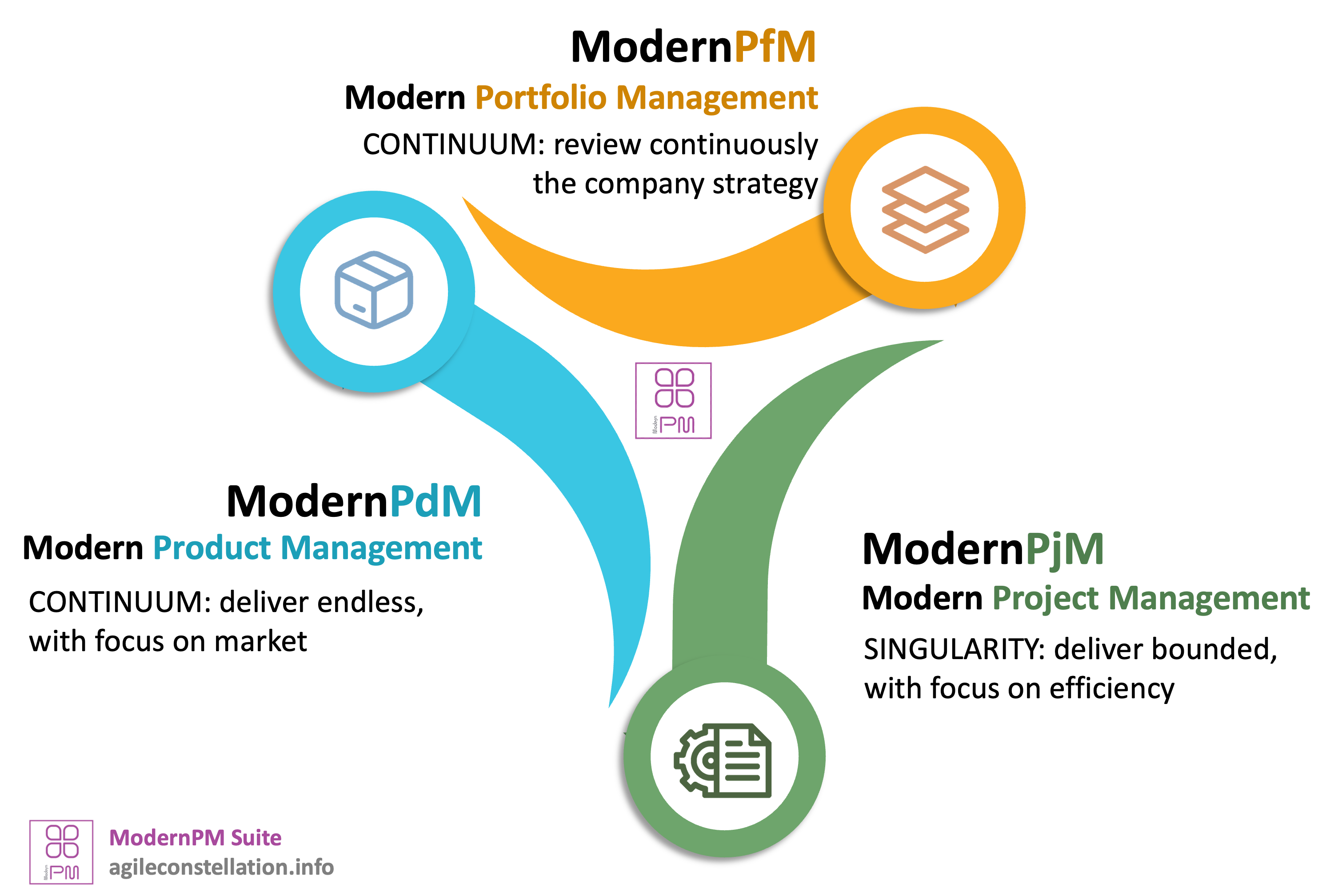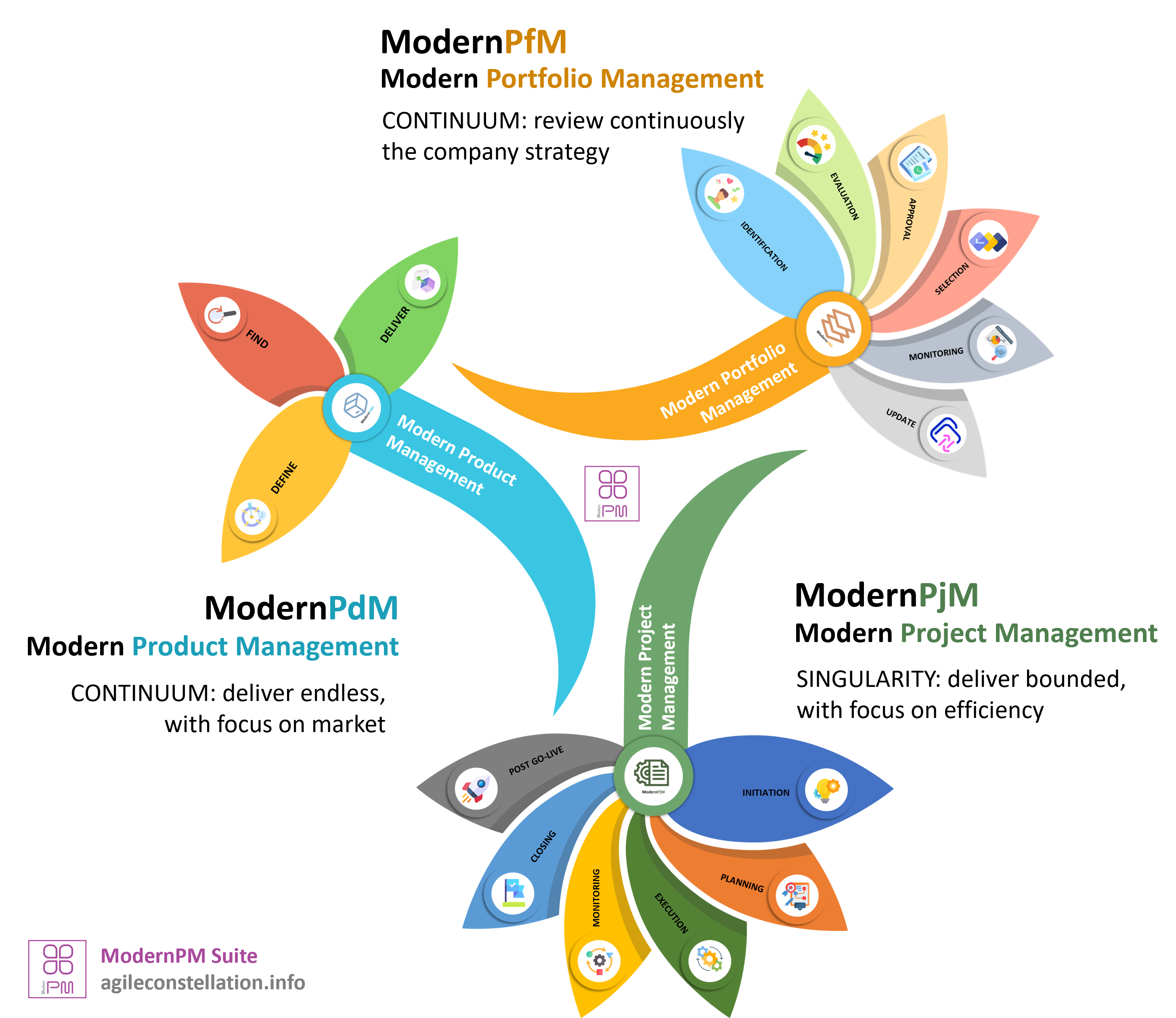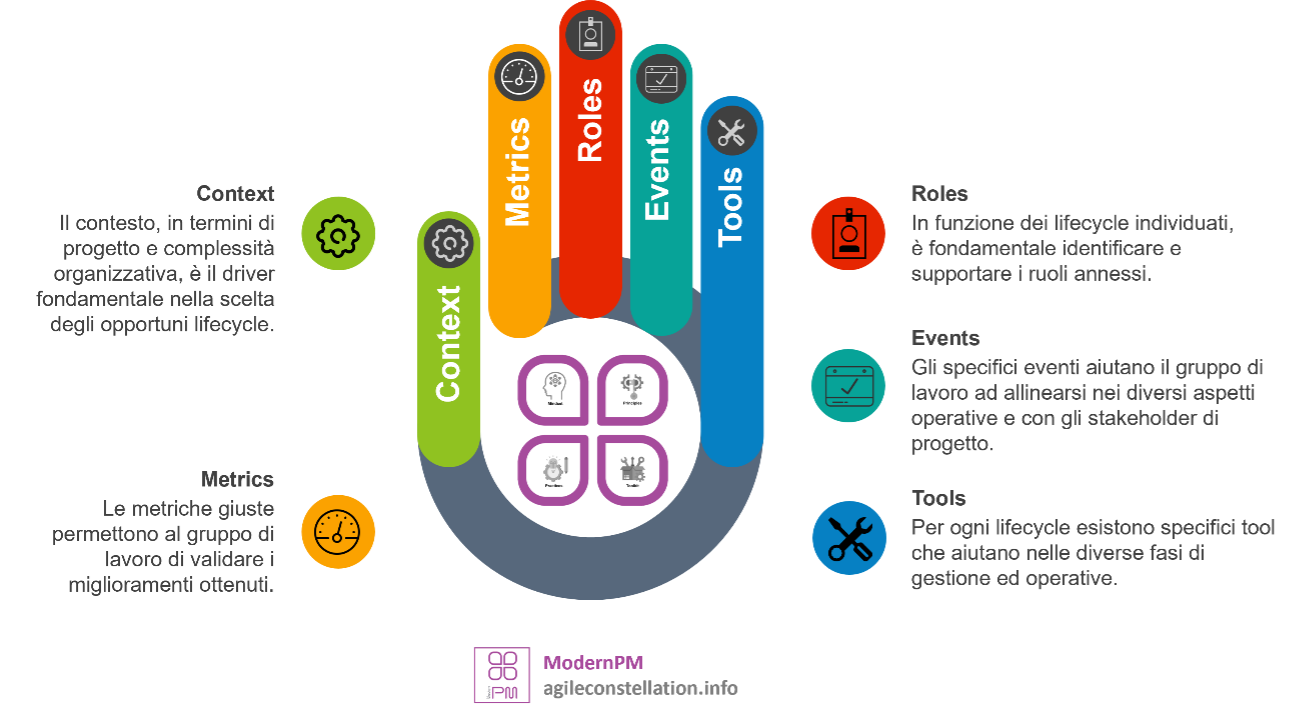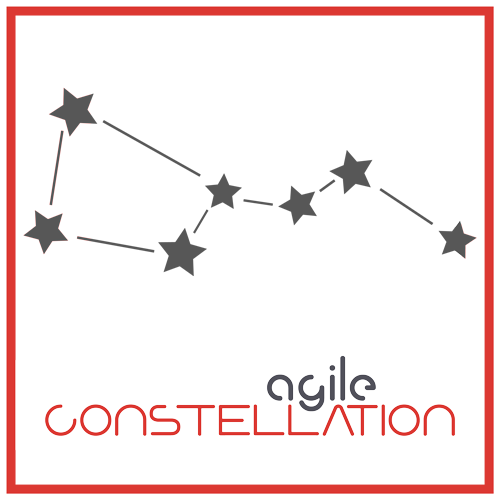
The goal of the ModernPM Suite (hereinafter also simply ModernPM) is to produce Value for the reference stakeholders, creating quality Initiatives capable of solving their needs. This takes the form of the ability to continuously adapt to changing conditions, from strategy to more operational aspects.
Initiatives can be of different types: from marketing actions to product development, so it is clear how fundamental it is to define a specific bouquet of tools adapted to the specificities of the business context. The pragmatic approach of the Suite leads to enter into the merits of things and appropriately evaluate which is the tool that best allows objectives.
The different initiatives are strategically managed through the Portfolio (attached to the Modern PfM), which allows the overall view to be developed in order to ensure that developments are aligned with strategic objectives and are executed efficiently.

When initiatives involve Product development, it is essential to emphasize that the following can be related types:
- Off-the-Shelf Product: Ready to use, designed and manufactured to be adopted by a wide range of customers with minimal adaptations. Ideal for scenarios where business needs are common and standardized, avoiding custom development costs.
- Custom Product: tailor-made for a specific customer, with fully customized functionality, interface and logic. Suitable for companies that have special needs not covered by standardized solutions.
- Semi-Custom Products that combine elements of standard products with customization possibilities. Typically, there is a common basis that can be modified or extended to meet the specific needs of a customer or market segment.
A company could still pursue an initiative even purely in terms of Project, for example when it concerns an action to review internal processes or a research project, in the event that the deliverables produced cannot be considered as a real product.
Depending on the type of product, a specific development and governance method can be adopted:
- Project (attached to the Modern PjM), suitable for Custom Products in which there is a well-defined beginning and end, responding to the characteristic of univocity and efficiency of development.
- Product Oriented Development (or also Value Stream – attached to Modern PdM), ideal for Off-the-Shelf Products, typically developed in relation to a specific market. The teams, and the associated people, work continuously, guaranteeing a stable and constantly evolving intrinsic know-how.
- Project + Value Stream, ideal for Semi Custom products where both logics often have to be managed.

A mature and robust use of the ModernPM Suite requires the development of a broad knowledge of different approaches (knowledge), experience in their use (expertise) and an understanding of how they can help in the specific context (pragmatism), continuously experimenting with a view to continuously finding new options and solutions.
The core of the Suite is composed of 4 fundamental Pillars:
- Mindset, i.e. the cultural aspect to be developed, in line with the philosophy and core aspects of the AgileConstellation Manifesto
- Principles, which guide the operational focus, extending and integrating those of the AgileConstellation Manifesto
- Practices, which allow the various activities to be concretely implemented, also here integrating and extending those of the AgileConstellation Manifesto
- Toolkit, a set of tools to support the various governance and operational activities.

The ModernPM is accompanied by the ModernPM Toolkit (MPMT), i.e. a set of methodological and operational tools that allow you to perform all the tasks in the best possible way, developed on 5 fundamental factors:
- Context: the reference context is the fundamental driver in the choice of the appropriate lifecycles.
- Metrics, the right metrics allow the team to validate the improvements achieved.
- Roles, depending on the lifecycles identified, it is essential to identify and support the related roles.
- Events, the specific events help the work team (or teams) to align in the different operational aspects.
- Tools, for each lifecycle there are specific tools that help in the different management and operational phases.




